
PPE Regulations
Introduction
Legislative Decree No. 81/2008, the Consolidated Act on Workplace Safety, establishes that PPE used in the workplace must comply with the provisions of Legislative Decree No. 475/92 and that any equipment intended to be worn or held by the worker to protect against one or more risks that could threaten their safety or health during work, as well as any complement or accessory intended for this purpose, must adhere to these rules (Article 74, Paragraph 1 of Legislative Decree April 9, 2008, No. 81).
The current safety and hygiene regulations in Italy, particularly Legislative Decree 81/2008, prioritize safety measures that focus on prevention and collective protection and the elimination at source of any type of contaminant present in the work environment.
The use of Personal Protective Equipment (PPE) is therefore always subject to the proper verification of the implementation of all possible technical and organizational measures to limit or eliminate risk factors. In fact, Legislative Decree 81/2008 provides for the use of PPE only when the adoption of preventive technical and/or organizational measures for collective protection is insufficient to eliminate all risk factors.
General characteristics and requirements
Ppe must:
- Be suitable for the conditions present at the workplace
- Be appropriate for the risks to be prevented, without posing a greater risk to the worker
- Take into account the needs and health of the worker
In general, they must ensure:
They should be lightweight, adjustable, ensuring thermal comfort, breathability, and limited dimensions
Category
PPEs are divided into three categories based on the risks:
Devices with simple design intended to protect users from minor injuries; these devices are self-certified by the manufacturer.
Devices not falling under Category 1 or Category 3, certified by an authorized control body (CE marking).
Devices with complex design intended to protect users from life-threatening risks or serious injuries; these include all respiratory protective devices, fall protection systems, and PPE for protection against aggressive chemical agents. For these devices, in addition to meeting the requirements for certification by an authorized control body (as in Category 2), manufacturers also adopt a quality control system that provides a second certification to the product (in addition to CE certification).
Replacement of PPE
One of the major challenges is determining when to replace a personal protective device. Some devices have an expiration date, while others require the worker to check the condition of wear to decide when it needs replacement.
For example: a respiratory device should be replaced when the operator notices particular difficulty in breathing; while eyewear should be replaced when the operator observes a loss of image clarity. In some cases, manufacturers equip the device with a wear indicator. To prevent issues for the worker, the employer should regularly replace PPE.
REFERENCE REGULATIONS FOR DEVICES DIVIDED BY CATEGORY
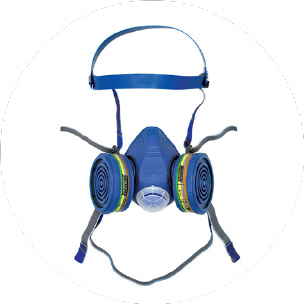
Respiratory protective equipment (RPE), also known as APVR (respiratory protection devices), are Category III devices designed to protect against potentially harmful airborne substances such as gases, dusts, and vapors through filtration. These devices must be used when risks cannot be avoided or sufficiently reduced by technical prevention measures or collective protection means (e.g., ventilation systems).
APVRs are divided into:
FILTER APVR
Disposable dust masks (conformity standard EN 149:2001+A1:2009)
Disposable dust masks with bacterial filtration for healthcare workers (FFP3 NR filtering facepiece) with three-ply design and exhalation valve (conformity standards EN 149:2001+A1:2009 and certification according to EN14683:2005 in Class II R, for protection against fluids and splashes, and passing bacterial efficiency test)
Half-masks (conformity standards EN140)
Full-face masks Class 1 (with 4-point head harness) and Class II (with 6-point head harness) with bayonet filter attachment and visor (conformity standards EN 166:1998 and EN136:2001)
ISOLATING APVR
Autonomous - self-contained breathing apparatus (conformity standard EN137)
Non-autonomous - breathable air circuit (conformity standard EN139)
Filters are classified with a code (based on type), a number (from 1 to 3 based on filtering capacity), and a color (based on the substance they filter), and are divided as follows:
Gas filters A, B, E, K (1÷3) (EN 14387)
Adsorption
Chemical reaction
Catalysis
Dust filters P (1÷3) (EN 143)
Combined filters ABEK (1÷3) P(1÷3)
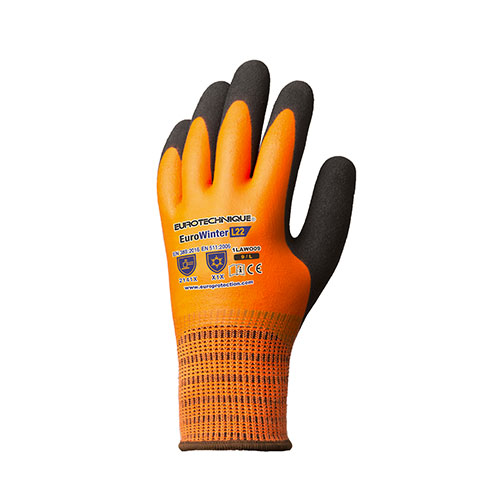
PPE for the upper limbs primarily concerns the hands and forearms, which are highly exposed to risks during work, especially in tasks involving:
Handling of acidic or alkaline disinfectants and corrosive cleaners
Work with hot masses or exposure to heat
Flat glass processing
Sandblasting
Work in refrigeration plants
Boning and butchering
Welding handling sharp edges replacement of knives in cutters
Cutting activities in meat processing
Gloves and arm protectors must guard against risks from various types of work. Therefore, in addition to having a common standard (EN420), each specific risk requires a different standard:
Gloves and arm protectors – conformity standard EN420
Mechanical and electrostatic risks – conformity standard EN388
Electrical/voltage risks – conformity standard EN60903
Chemical and microbiological risks – conformity standard EN374
Cold risks – conformity standard EN511
Heat and fire risks – conformity standard EN407
Vibration risks – conformity standard EN420
Moreover, various types of risks necessitate the selection of specific materials for the construction of devices, particularly:
Nitrile, vinyl, polyethylene, or latex gloves (to protect against chemical absorption)
Rubber or neoprene gloves (to protect against corrosive chemical elements such as acids and/or alkalis or petroleum derivatives)
Leather or coated nylon gloves (to protect against mechanical risks)
Dielectric material gloves (for electrical insulation)
The latter, in particular, must be made from a single piece without seams, in special material with uniform and constant thickness, and equipped with a cuff that covers the forearm.
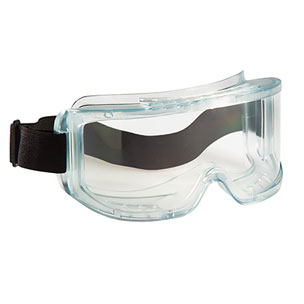
PPE for the eyes is essential in all work environments where there is a risk from splinters, hot materials, caustic or corrosive substances, radiation, and more generally, from the following activities:
- Welding, grinding, and shearing
- Mortising and chiseling
- Stone processing and finishing
- Use of bolt extractors
- Use of chip removal machines
- Die forging
- Removing and crushing splinters
- Sandblasting
- Handling of acidic or alkaline products, disinfectants, and corrosive cleaners
- Using liquid jet pumps
- Manipolazione di masse incandescenti fuse o lavori in prossimità delle stesse
- Exposure to radiant heat
- Use of lasers
Eye and face protection devices include spectacles, goggles, X-ray and laser protective glasses, UV, IR, and visible light radiation protection, face shields, welding masks, and helmets for arc welding.
These PPE can prevent mechanical eye injuries (from splinters, dust, etc.), thermal injuries (from heat and cold)
chemical injuries (from acids and alkalis), and optical injuries (from UV rays, lasers, and infrared radiation)
All these devices follow the conformity standard EN166. EN166
To increase the level of protection, eye protection PPE can be equipped with specific filters:
- Welding filters (conformity standard EN169)
- UV filters (conformity standard EN170)
- IR filters (conformity standard EN171)
- Solar Protection Filters for Industrial Use (conformity standard EN172)
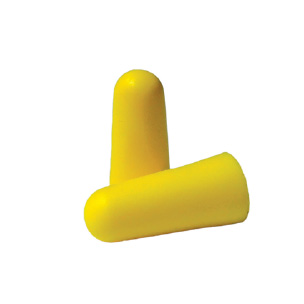
PPE for hearing protection (ear protectors) are necessary to prevent occupational hearing loss, which is a serious and irreversible weakening of the auditory system.
Protection devices are needed when exposed to average daily noise levels exceeding 85 dB, and especially to instantaneous noise levels above 90 dB, as well as in work environments such as:
Work near metal presses
Use of pneumatic tools
Ground staff activities at airports
Piling
Wood processing
Textile processing
There are various types of PPE for hearing protection, grouped into three categories:
Ear Muffs (conformity standard EN 352-1)
Helmet-mounted (conformity standard EN 352-3)
Active, with built-in radio (conformity standard EN 352-4)
Ear Plugs (conformity standard EN 352-2)
Ear Bands (conformity standard EN 352-2)
In addition to the reference standard, ear protectors must indicate the type of frequency they protect against, specifically:
L (protection from frequencies 65 Hz to 250 Hz)
M (protection from frequencies 250 Hz to 2000 Hz)
H (protection from frequencies 2000 Hz to 8000 Hz)
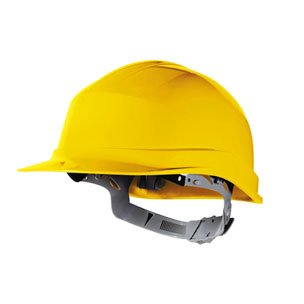
PPE for the head is limited to one device: the helmet (or hard hat).
The helmet consists of an external protective shell, an adjustable internal harness, and an internal sweatband.
The essential features must be:
- Impact absorption capacity
- Resistance to penetration
- Impact resistance
Helmets can be equipped with additional accessories such as earmuffs, face shields, and chin straps to enhance safety in specific situations requiring extra PPE.
The PPE should be replaced every 5 years from the date of manufacture and follows the reference standard EN397.
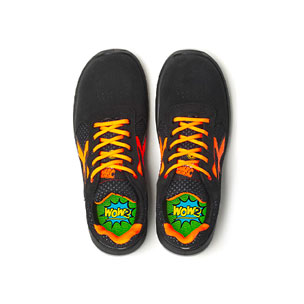
PPE for lower limb protection is often solely associated with safety footwear; however, there are various types of PPE designed to protect different parts of the lower limbs:
- Footwear (conformity standard EN20345)
- Knee Protectors (conformity standard EN 14404)
- Gaiters (conformity standard EN420)
While safety footwear is essential in all work environments, gaiters and knee protectors are used only in certain sectors where protection of the calves and knees is necessary.
Safety footwear, or more commonly referred to as safety shoes, is classified by letters and numbers that identify specific characteristics:
SB FOOTWEAR:
- Toe cap with 200 Joules resistance
- Upper made of split leather or similar
- Minimum height of the upper
- Sole resistance to hydrocarbons
S1 FOOTWEAR Same as SB footwear, plus:
- Closed heel area
- Antistatic properties (includes “A” marking)
- Energy absorption in the heel area (includes “E” marking)
- Hydrocarbon resistance
S1P FOOTWEAR Same as S1 footwear, plus:
- Perforation-resistant plate (includes “P” marking)
S2 FOOTWEAR Same as SB footwear, plus:
- Closed heel area
- Antistatic properties (includes “A” marking)
- Energy absorption in the heel area (includes “E” marking)
- Hydrocarbon resistance
- Waterproofing
S3 FOOTWEAR : Same as S2 footwear, plus:
- Perforation-resistant plate (includes “P” marking)
- Cleated sole (cleats)
S4 FOOTWEAR Same as S1 footwear, plus:
- Hydrocarbon resistance (GOLD marking)
S5 FOOTWEAR Same as S4 footwear, plus:
- Perforation-resistant plate (includes “P” marking)
- Cleated or studded sole
In addition to the above characteristics, safety footwear may have additional features:
AN – “Ankle Protection” (ankle protection ≤ 10 kN). The average value resulting from the test should not exceed 10 kN, and no single value should exceed 15 kN.
CI – “Cold Insulation” (cold insulation tested at -17 ºC). During the test, the decrease in temperature inside the sole should not exceed 10 ºC.
CR – “Cut Resistance”, (cut resistance of the upper ≥ 2.5). Cut protection is provided by inserting several layers of Kevlar between the inner lining and the upper. This type of footwear must have a non-removable protective layer at least 3 cm thick, extending from the toe cap to the heel and throughout the shoe.
ESD – “Electrostatic Discharge” (electrostatic discharge between 100 MΩ and 35 MΩ). ESD footwear protects not the person but the ElectroStatic Discharge Sensitive devicesElectroStatic Discharge Sensitive devices), i.e., electronic equipment sensitive to electrostatic discharge, in work areas at risk called (EPA).Electrostatic Protected Areas).
HI – Heat Insulation (tested at 150 ºC). During the test, the temperature increase inside the sole after 30 minutes should not exceed 22 ºC. After the test, the sole should not show damage or wear that would affect the use or performance of the footwear. The insulation must be non-removable from the shoe.
HRO – Heat Contact Resistance (tested at 300 ºC). During the test, the rubber and polymer soles should not melt or crack, even when bent.
M – Metatarsal Protection(only for footwear referenced by UNI EN ISO 20345). The minimum residual height at the time of impact should be ≤ 40 mm in size 41/42. The protection must be non-removably attached to the footwear and designed to distribute impact forces over the sole, toe cap, and a larger surface area.
WR – Waterproofing (for S2 and S3 safety footwear). The total wet area measured inside the shoe during the test should be ≤ 3 cm².
SRA - Slip Resistance on Ceramic Tiles + Sodium Lauryl Sulfate (NaLS) (forward slip coefficient for high-heeled footwear ≥ 0.28 / forward slip coefficient for low-heeled footwear ≥ 0.32)
- SRB – Slip Resistance on Steel + Glycerin (forward slip coefficient for high-heeled footwear ≥ 0.13/ forward slip coefficient for low-heeled footwear ≥ 0.18)
- SRC – Slip Resistance SRA + SRB
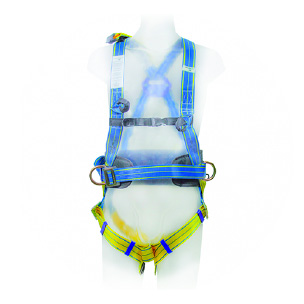
Fall protection PPE are all categorized as III category PPE due to the high risks associated with falling from height, and are mainly divided into:
Harnesses (conformity standard EN361)
Harnesses with belt (conformity standard EN358)
Lanyards (conformity standard EN355)
Carabiners (conformity standard EN12275)
These devices, according to D.P.R. 547/55 art.386, are mandatory for work at heights, in wells, tanks, and similar situations to allow for the quickest possible rescue of an injured person in the event of an accident.
A fall protection system consists of three elements: an anchorage point, a harness, and a connection between the anchorage point and the harness (lanyard).
Fall protection PPE used in elevated workplaces can be divided into:
FALL ARREST (e.g., working on roofs, metal structures): The system generally includes an anchorage point, a full-body harness, and an energy-absorbing lanyard. The operator can move easily on a surface (even if sloped).
POSITIONING (e.g., working on trees, ladders, and towers): Positioning systems are used to allow the worker, who is working at height, to work in a static position with their hands free and their feet resting on a natural or artificial element. These systems are not intended for fall arrest.
DESCENT AND/OR RESCUE DEVICES: When the operator needs to enter tanks, manholes, etc., and in an emergency, a recovery from above may be necessary.
ROPE ACCESS: When traditional access methods are not applicable, rope access systems suspend the operator at the work site, allowing them to work with their hands free.
Regulations for Fall Protection PPE also include mandatory periodic inspections:
According to Article 77 of Legislative Decree 81/09 and its amendments, Annex 1 of Legislative Decree 475/92, and the EN365 standard, the employer is required to subject third-category fall protection devices to a specific periodic inspection at least annually (or less frequently based on the manufacturer's recommendations). This inspection must be conducted by a person with expertise and competence as defined by the technical standard.
Even if the manufacturer provides a longer warranty (typically 5, 7, or 10 years), the employer is still obligated to conduct annual checks.
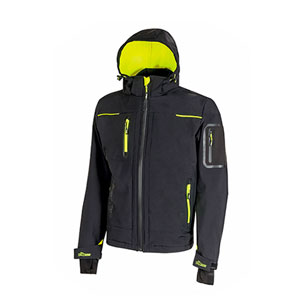
PPE for body protection includes all types of technical clothing designed and produced according to the UNI EN340 “Protective Clothing – General Requirements,” which regulates the fundamental requirements.
For specific work needs (e.g., cold, heat, visibility, etc.), the aforementioned standard is supplemented by specific standards for each type of sector:
UNI EN 470 “Protective Clothing for Welding and Similar Processes.” The “General Requirements” for protective clothing provide necessary indications on labeling and manufacturer, clothing size, and material behavior during aging.
UNI EN 342 “Protective Clothing Against Low Temperatures Below -5°C.” Used by those working in refrigerated cells or outdoors in particularly cold areas, “cold protection” clothing is made from padded or multilayered fabric. For air permeability and water vapor permeability, there are three and four levels of performance, respectively.
CEN 162 N 105 “Protective Clothing Against Heat and Flame,” including protection from radiant heat, brief contact with flames, sparks, and molten metal splashes. “Flame-resistant” clothing is made from mineral, synthetic, or natural fibers that are difficult to ignite. They include supporting fabrics and reflective surface coatings with aluminum, copper, silver, and gold foils that reflect up to 90% of radiant heat. For flammable liquid substances, fabrics with self-extinguishing synthetic coatings are used, which are also resistant to acids. Protection requirements are determined by performance levels, represented by a pictogram with 5 numbers:
Position
1: Limited flame spread (test according to CEN/TC 162N 126, e.g., 2)
2: Convective heat (test according to DIN EN 367, e.g., 3)
3: Radiant heat (test according to DIN EN 366, e.g., 3)
5: Molten aluminum splashes (test according to DIN EN 373, e.g., 2)
6: Molten iron splashes (test according to DIN EN 373, e.g., 1)
UNI EN 465 “Protective Clothing Against Chemicals; Protection Against Liquid Chemicals; Performance Requirements; Type 4 Equipment; Protective Clothing with Impermeable Seams Between Parts of the Garment.”
UNI EN 466 “Protective Clothing Against Chemicals; Protection Against Liquid Chemicals (including aerosols from liquids); Performance Requirements; Type 3 Equipment; Protective Clothing with Impermeable Seams Between Parts of the Garment.”
UNI EN 467 “Protective Clothing Against Chemicals; Protection Against Liquid Chemicals; Performance Requirements; Type 5 Equipment; Clothing That Provides Protection Against Chemicals for Parts of the Body.”
UNI EN 943 “Protective Clothing for Use Against Liquid and Gas Chemicals, Including Aerosols from Liquids and Solid Particles; Performance Requirements for Protective Clothing Without Ventilation, with Gas-tight Seams (Type 1B Equipment).”
UNI EN 944 “Protective Clothing for Use Against Liquid and Gas Chemicals, Including Aerosols from Liquids and Solid Particles; Performance Requirements for Air-supplied Protective Clothing with Gas-tight Seams (Type 1C Equipment).”
UNI EN 945 - Protective clothing for use against liquid and gaseous chemical substances, including aerosols from liquids and solid particles; performance requirements for air-fed protective clothing with non-gas-tight joints (Type 2).
UNI EN 946 - Protective clothing for use against liquid and gaseous chemical substances, including aerosols from liquids and solid particles; performance requirements for enveloping and non-aerated protective clothing with gas-tight joints (Type 1A).
DIN VDE 0689, Part 1 - Insulating protective devices for the head, face, hands, feet, and body. These personal protective equipment (PPE) are used for work on electrical installations and must be tested with a voltage of 1000 volts (marked).
UNI EN 510 - Protective clothing for workplaces where there is a risk of being caught in moving or rotating parts. Clothing that complies with this standard must be one-piece, tight-fitting, without external pockets, and with a smooth surface.
UNI EN 412 - Protective aprons for use with knives. These PPE are made from metal fabric or stainless steel and protect against puncture and cut injuries.
UNI EN 381 - Protective clothing for users of chain saws. For these garments, mainly for leg and abdomen protection, various layers of fabric are used that, if cut, expand and block the chain of the portable saw for a few seconds.
UNI EN 471 - High visibility clothing for the hazards of road traffic. These PPE are divided into three classes based on the reflective surface present:
Class 1 (minimum reflective surface: e.g., suspenders)
Class 2 (medium reflective surface: e.g., vests, trousers)
Class 3 (maximum reflective surface: e.g., suits, jackets)
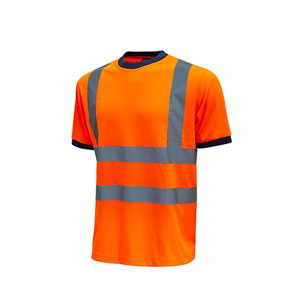
High visibility PPE is essential in all work contexts where it is crucial to visually signal the presence of the worker. The new reference standard EN 20471, which replaces the previous EN 471, maintains the classification of PPE into three classes based on the reflective surface present:
- Class 1 (minimum reflective surface: e.g., suspenders)
- Class 2 (medium reflective surface: e.g., vests, trousers)
- Class 3 (high reflective surface; the PPE must cover the torso and have reflective bands on sleeves and/or legs of trousers).
A new requirement is that the background material (fluorescent) must surround all relevant parts (torso, arms, and legs as applicable) with a minimum width of 50 mm. Permissible openings for fastening systems and seams remain the same, as does the maximum inclination for bands on the torso and legs (20°).
